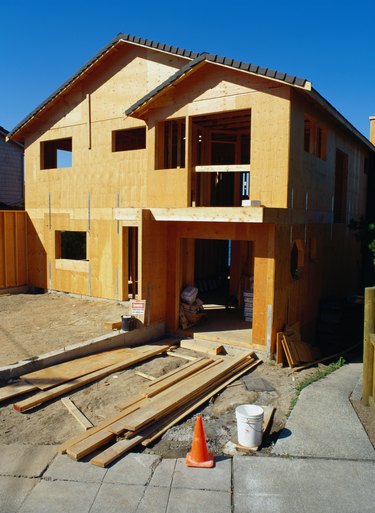
Nail guns save time and your hands when you are undertaking a job that requires a lot of nails. Instead of pounding away with a hammer for hours, a nail gun shoots the nails into your project in a fraction of the time. The type of nail gun you use will depend on the project because not all nail guns are appropriate for every use.
Siding Options
Video of the Day
When installing siding, you have several options to put on your home. Fiber cement siding needs a nail gun for installation because hammering the nails in this dense material is extremely difficult. Wood siding can be installed by hand, but a nail gun makes the process easier and faster. Hardboard siding is made from ground wood and glue, similar to particle board. This type of siding needs careful nailing so you do not split the boards and let water inside that could rot the siding from the inside out.
Video of the Day
Nails for Siding
The nail gun you use for siding will have to be able to handle siding nails. These have small ridges on the sides to prevent the nail from pulling out of the siding after installation. Choose stainless steel, ring-shank siding nails or hot-dipped galvanized siding nails. These nails will not rust even with exposure to the elements. To avoid splitting wood siding, opt for blunt tips on the nails instead of needle tips.
Nail Gun for Siding
A pneumatic nail gun should be used for siding installation, especially for harder fiber cement siding. The gun should have adjustments so you can change the pressure used based on the type of siding you are nailing into. For instance, you will need a higher air pressure for nailing into fiber cement than you would into pine siding. Choose a nail gun that will accept siding nails. You cannot use a brad gun for installing siding because the brads leave two holes for each brad and do not hold up as well as siding nails.
Settings
The settings you choose on the air compressor for a pneumatic nail gun will change depending on the type of siding you are installing. The force behind the nail provided by the compressed air needs to be the same as the density of the siding material. The setting needs to be just enough so the nail head is flush with the surface of the siding and not above or below it.